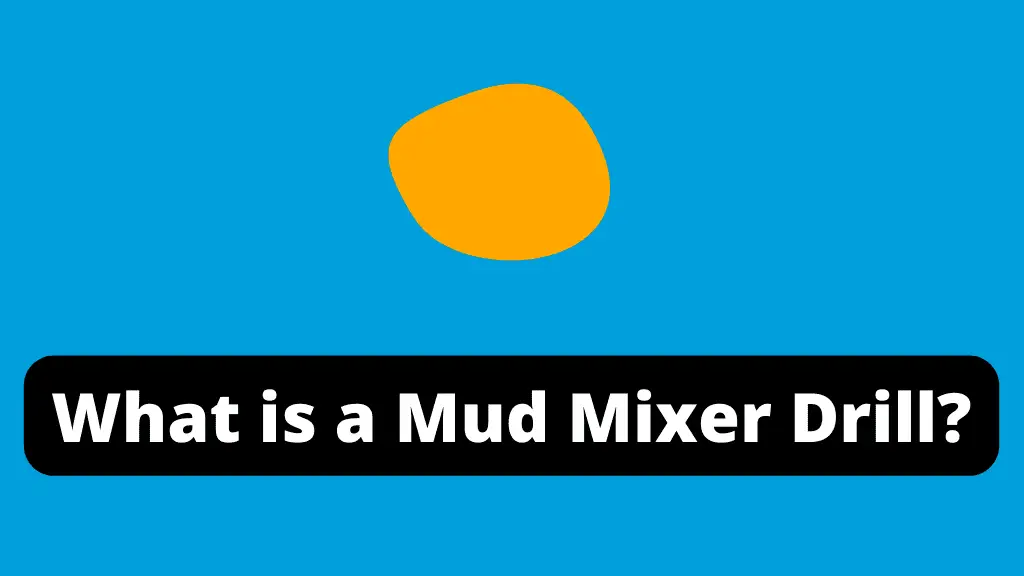If you’re a DIYer or new to woodworking, you might have come across the term “mud mixer drill” and wondered what it meant. It sounds like a tool used to make mud pies, doesn’t it? The reality is that this tool has nothing to do with mud pies—and everything to do with improving the quality of your work.
What is a Mud Mixer Drill? It’s a special type of drill that has low speed, high torque, and is easy to hold. With the appropriate bit, it can be used for mixing substances such as drywall joint compound, paint, grout, and mortar. The bit can resemble an egg beater, paddle, or stirrer.
Dedicated tools are made just for the purpose of mixing substances. These usually have handles on opposite sides, to make it easy to control the tool. Also, they have powerful motors, because they need to stir thick and viscous materials. However, can a general-purpose drill be used for this? Let’s go into more detail:
Table of Contents
- What is meant by a Mud Mixer Drill?
- Can you use a drill as a mud mixer?
- Can an SDS drill be used as a mud mixer?
- Can I use a mud mixer drill to bore holes?
- Related Questions
- Final Words …
What is meant by a Mud Mixer Drill?
Mud is a general term, with multiple meanings. Sometimes, it refers to drywall joint compound, used when patching holes and seams in drywall sheets. It is also used to refer to other viscous compounds that need mixing, such as grout, mortar, and paint. Many of these resemble “Mud” made from dirt or clay and water. The mud mixer drill and bit are used to mix these substances. Mud mixer drills have several properties that make them efficient at mixing:
Speed
Most of the time, drills are used to bore holes in materials such as wood. To do this, the drill bit needs to spin rapidly. The speed can be 3000 RPM or even faster! However, you need much slower speeds for mixing. The speed for a mud mixer drill can be 300 RPM or so. If you spin the bit too fast, the “mud” can end up splattering all over, making a mess!
High torque
Torque is rotational force. Mud mixer drills are used to stir thick, viscous mixtures, so they need a lot of torque in order to get the job done.
In the International system of measurement, the unit for torque is the Newton-Meter, denoted by Nm. The English system has the units foot-pound and inch-pound as units for torque. Torque measurements can be converted from one unit to another as follows:
1 Nm = .73756 ft-lb
also, 1 Nm = 8.8507 in-lb
The table below shows various mixer drills with torque ratings in Nm, ft-lb, and in-lb:
| Tool | Nm | Foot-pounds | Inch-pounds |
|---|---|---|---|
| ROLAYSEE 10-Amp Corded 5/8″ Mixing Drill | 35 | 26 | 310 |
| Maxxt 9-Amp Corded 1/2″ Mixing Drill | 10 | 7.4 | 89 |
| Maximum 10-Amp High Torque Corded 5/8″ Mixing Drill | 110 | 81 | 974 |
| Bosch 9-Amp GBM9-16 Corded 5/8″ Mixing Drill | 9.8 | 7.2 | 88 |
| Ridgid 9-Amp R7122 Corded 1/2″ Mixing Drill | 67 | 49 | 590 |
| Genesis 9-Amp GSHD1290 Corded 1/2″ Mixing Drill | 12 | 8.9 | 107 |
It can be seen that the torque varies greatly from one model to another.
Note: This post may contain affiliate links. If you purchase a product through an affiliate link, I’ll earn a commission, at no cost to you. To find out more, see my full disclosure.
Easy to hold
The mud mixer drill is used to mix viscous substances, like concrete or mud. Because of the torque generated by a drill, it will spin out of control unless you’re holding it very tightly. Most mud mixer drills have handles that make this easier, and some are adjustable so they can be screwed in at various places on the tool. See one like this on Amazon.
The spade handle, located at the back of some mud mixer drills, is a useful feature. This is similar to the handle of a spade or shovel and helps the operator control the tool so they can perform their task with ease. See a mud mixer drill with a spade handle on Amazon.
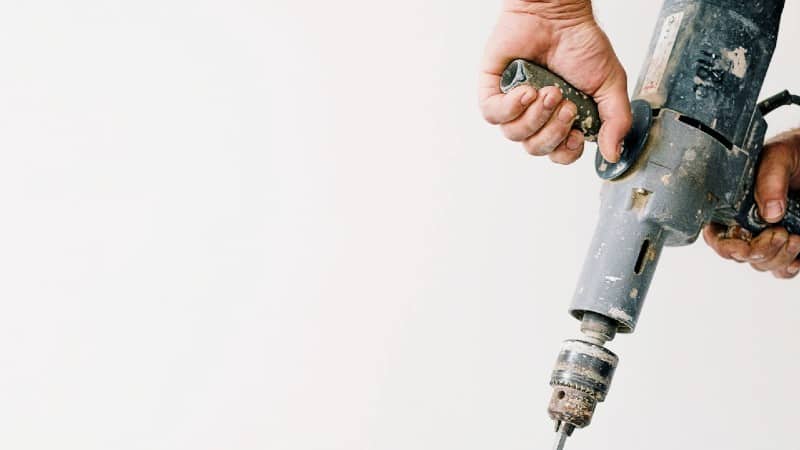
Can you use a drill as a mud mixer?
The answer is YES! The drill you use to bore holes can be used as a mud mixer.
A general-purpose drill driver is a versatile tool that can accomplish many different types of tasks. In order for your drill driver to work well as a mud mixer, you need to make sure that it’s set up properly:
#1. Set the speed to the lowest position. You don’t need to use the full speed of your drill when mixing mud, so setting it to a lower speed is actually better. You want to avoid higher speed because it can cause the mixture to splash out of the bucket and make a mess!
#2. One option is to set the drill driver to drilling mode.
#3. Put a mixing bit into the chuck and tighten it. Most drill drivers have chucks that do not require a chuck key. If you move the drill in the forward (clockwise) direction and hold the chuck, it will tighten on the bit. If you put the drill in reverse (counter-clockwise) and hold the chuck, it will loosen the hold on the bit.
#4. You can use the variable-speed trigger to control the mixing speed within the low-speed range. The speed only needs to be a few hundred RPM for this mixing task.
If you mix mud often, you might want to use a specialized mud-mixing device.
The mud-mixing device is made for that purpose. If you’ve been using a general-purpose drill as a mud mixer, it may be time to switch over to the specialized device.
General-purpose drills are not designed for mixing mud and may not be strong enough to handle the task.
Sometimes, drills break. I’ve written another article that explains why this happens.
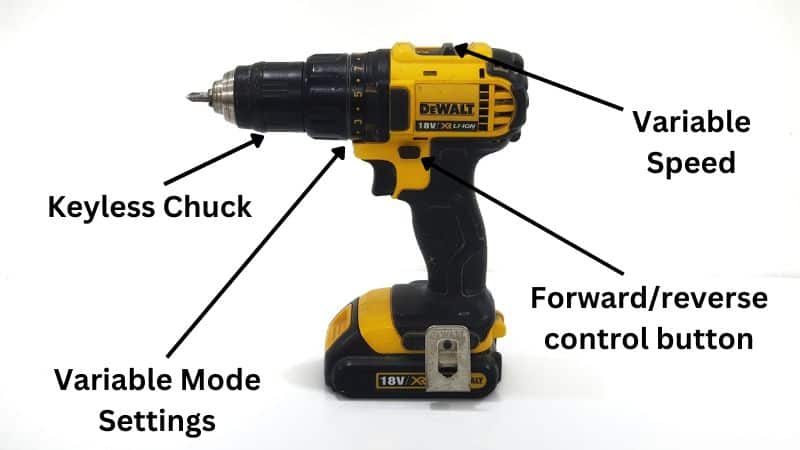
Can an SDS drill be used as a mud mixer?
Yes, it can be used for that purpose.
The SDS drill is a specialized drill used for drilling holes in tough materials such as concrete or brick. SDS stands for Slotted Drive System. Bits for these drills have slotted ends that allow the bits to be moved in and out as the drill hammers.
SDS drills are expensive tools and are not really designed for mud mixing. So, why would you want to use them to do this? Here are some reasons:
#1. You might already have an SDS drill and wonder if you can use it to mix mud.
#2. Your other drills all have chucks that are too small for the mixing bits.
#3. You already have an SDS drill and want to avoid having to buy another tool.
It certainly is possible to use an SDS drill for mud mixing. The hammering mode can be switched off, since mixing does not require hammering. Common mixing bits are not made to fit into an SDS chuck. However, some mixing bits are made for SDS drills. See a bit like this on Amazon.
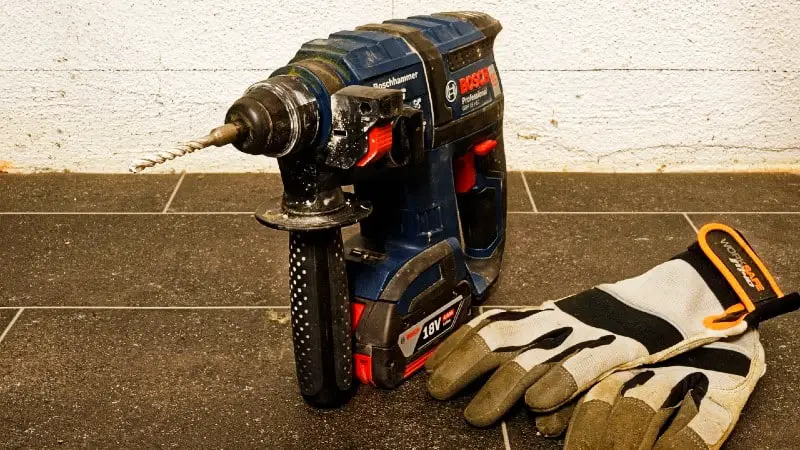
Can I use a mud mixer drill to bore holes?
If you’ve ever used a drill to bore holes in wood (and who hasn’t?), you know that the speed of the drill is key: if it’s too slow, you can tear out the wood, leaving rough edges; if it’s faster, the hole is much cleaner.
The variable speed control on a mud mixer drill allows you to vary the speed from about 0 to 700 RPM. The holes you drill are likely to be rough, which could make them unacceptable for some applications. A bit spinning at more than 3,000 rpm would do a better job of cutting through a material such as soft wood.
If you want cleaner work, then you should look for a higher-speed drill.
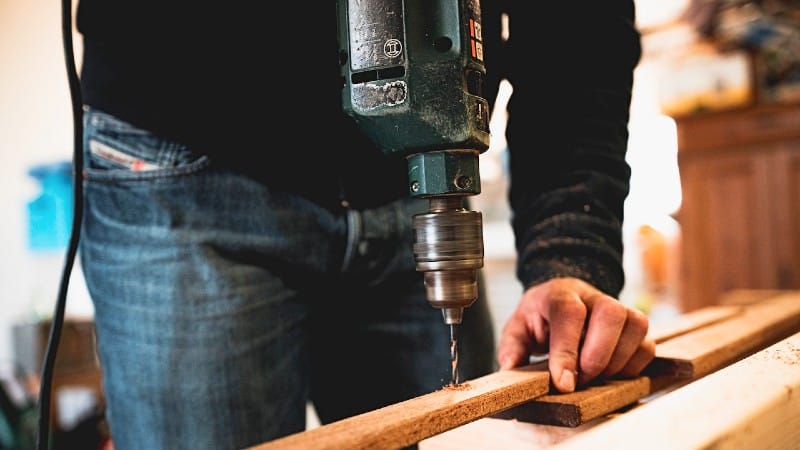
Related Questions
Should I use a dedicated mud mixer or a drill?
Do you plan on doing a lot of mud mixing and can you rationalize spending money for a specialized tool?
If so, then a dedicated mud mixer might be right for you. These tools are usually very powerful, generate plenty of torque, have handles on the side for easy manageability, and are made just for the purpose of mud mixing, including the mixing of concrete.
They are durable, and should last a long time. See an example of a dedicated mud mixer on Amazon.
Do they make cordless mud mixer drills?
Yes, there are cordless mud mixer drills. The cordless design makes the tool more versatile and easier to use than regular drill models. See a cordless mud mixer drill on Amazon.
Final Words …
If you’re interested in something that will save your shoulders and let you drill a wider variety of materials, a mud mixer drill is probably worth it. There are plenty of models out there, so do some research to figure out which one works best for you.
Did you enjoy reading this article? If so, you might like to visit my Pinterest profile. It contains pins about DIY & Crafts, Woodworking, Tools, Projects, Hardware, and many other topics.

